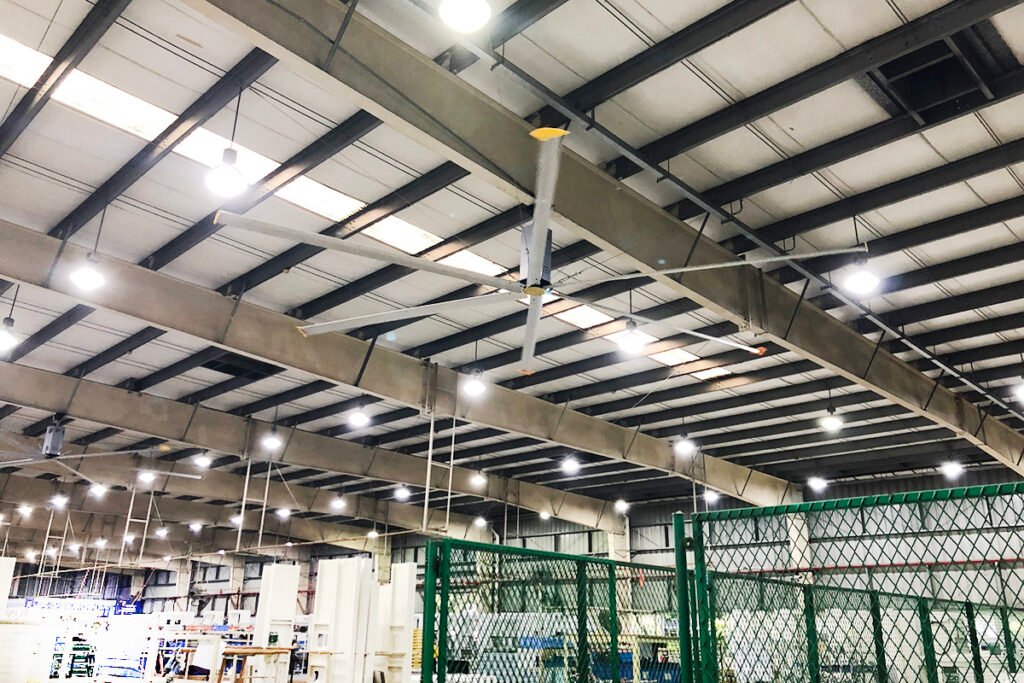
In industrial workshops, the strategic placement of High-Volume, Low-Speed (HVLS) fans beneath the ceiling beams is a common sight, offering a large-scale solution for air circulation and temperature management. These overhead HVLS fans are suspended from the robust structural beams, which provide the necessary support and stability for the fan’s operation.
The positioning of these fans is deliberate; it allows for optimal air distribution throughout the workspace without obstructing the workflow on the factory floor. The large blades of the HVLS fans rotate at low speeds, generating a steady and gentle airflow that effectively covers the entire area beneath them. This airflow is instrumental in reducing the heat and humidity that can accumulate in industrial environments, thus creating a more comfortable and productive working atmosphere for employees.
The energy efficiency of HVLS fans is particularly beneficial in settings where traditional cooling methods may be costly or inadequate. By moving large volumes of air with minimal energy consumption, these fans contribute to the overall cost savings and environmental sustainability of the facility.
The installation of HVLS fans beneath the ceiling beams requires careful consideration of the structural integrity and load-bearing capacity of the beams. It is essential to ensure that the fans are securely fastened and that their operation does not compromise the safety of the workspace.
